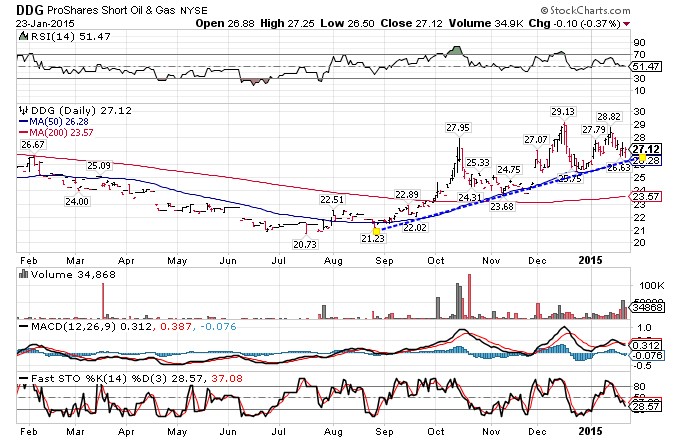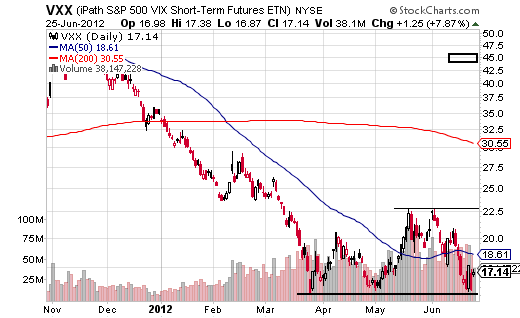Inverse ETFs Lift Falling Portfolio
Post on: 29 Март, 2015 No Comment

If you are interested in outperforming traditional market benchmarks. maximizing investment returns regardless of market direction, or hedging your portfolio against market risk, inverse ETFs offer a convenient and innovative way to accomplish these objectives. (For tips on ETFs during a recession, check out 4 ETF Strategies For A Down Market .)
ETFs in General
Exchange-traded funds (ETFs) are similar to other packaged investment products like mutual funds but with several compelling differences. Like mutual funds, ETFs can provide investors with a diversified portfolio of securities designed to meet a wide range of investment objectives. Other characteristics such as access to professional investment management and exposure to alternative asset classes can be accomplished by using either investment product.
In contrast to mutual funds, ETFs typically trade on exchanges and are continuously priced in real time, much like equity securities. ETFs are ideal for providing investors with access to a host of sophisticated investment strategies unavailable in long-only portfolios and other strategically allocated investment programs. One could ostensibly argue that ETFs are vastly superior to mutual funds in this respect. This distinction is significant and will be explored in greater detail below.
Today you can find leveraged and inverse ETFs associated with virtually every important broad market benchmark, macroeconomic sector and most key industry groups. (For more on ETFs in general, see An Inside Look At ETF Construction .)
Unique Characteristics
The first unique characteristic is self-evident; inverse ETFs seek investment results that correspond to the inverse (opposite) of the benchmark, or index, with which they are associated. For example, the ProSharesShort QQQ ETF (AMEX:PSQ ) seeks results that correspond to the inverse of the performance of the Nasdaq 100 Index. If you anticipate a downturn in the Nasdaq 100, you would simply buy shares in PSQ.
Another unique characteristic is the use of derivative instruments. Exchange-listed futures and options on futures contracts, swaps and forward agreements, and listed options on individual securities and securities indexes are typically used. The investment advisor to the ETF will trade or invest in derivative instruments that he or she believes will deliver the performance stated by each ETF using directional, non-directional, arbitrage, hedging and other strategies. (Keep reading about this subject in An Introduction To Swaps .)
Usually, investment capital held in the legal trust underlying each inverse ETF is not invested directly in the securities of the associated indexs constituents, unlike long-oriented ETFs. Also, assets not currently invested in derivatives or securities are frequently invested in short-term debt and/or money market instruments. The yields associated with these debt instruments contribute to the portfolios total return and can be used as collateral (margin) for open derivative positions.
A number of inverse ETFs seek to deliver returns that are multiples of the benchmark, or of the benchmarks inverse. For example, the ProSharesUltraShort Russell 2000 (AMEX:TWM ) seeks to deliver a return that corresponds to twice the inverse of the Russell 2000 Index. These funds accomplish this objective by deploying a number of complex investment strategies, often involving leverage.
Leverage is a double-edged sword. It can be an advantage or a disadvantage, depending on your perspective. Leverage in inverse ETFs involves borrowing investment capital for investment or speculative positions that are quite small relative to the positions overall exposure to fluctuations in price and potential for outsized rates of return. These techniques are considered aggressive and are not suitable for all investors. (To read more, see Rebound Quickly With Leveraged ETFs and What is the difference between hedging and speculation? )
Advantages
Investing in inverse ETFs is quite simple. If you are bearish on a particular market, sector or industry, you simply buy shares in the corresponding ETF. To exit the position when you think the downturn has run its course, simply place an order to sell. Investors obviously still need to be right in their market forecast in order to profit. If the market moves against you, these shares will fall in price.
Because you are buying in anticipation of a downturn and not selling anything short (the advisor to the ETF is doing that on your behalf), a margin account is not required. Selling shares short involves borrowing from your broker on margin. Costs associated with selling short are therefore avoided. Successful short selling requires a great deal of skill and experience. Short covering rallies can appear out of nowhere and quickly erase profitable short positions.

Investors do not need to open futures and/or options trading accounts. Most brokerage firms will not permit investors to engage in complex investment strategies involving futures and options unless the investor can demonstrate the knowledge and experience necessary to understand the risks inherent in these strategies and instruments. Because futures and options are limited in duration and quickly erode in price as you approach expiration. you can be right on your market call but still wind up losing all or most of your investment capital. Thanks to the proliferation of these ETFs, less experienced investors are no longer precluded from gaining exposure to these strategies and can avoid the hazards that often wipe them out.
Inverse ETFs also provide access to professional investment management. It is extremely difficult to successfully trade options, futures, sell short or speculate in the financial markets. Through these funds, investors can gain exposure to a host of sophisticated trading strategies and delegate a portion of their investment management responsibilities to the investment advisor overseeing the ETF. (Learn more by reading The Gold Showdown: ETFs Versus Futures .)
Disadvantages/Risks
- Leverage. Because trading derivatives involves margin, creating leverage, certain undesirable situations can arise. Leveraged futures positions can and do fluctuate dramatically in price. These wild price swings can lead to inefficient markets. resulting in inaccurately-priced positions within the ETF portfolio. This can eventually lead to ETF share prices that are not precisely correlated with the underlying benchmark. In addition, inverse ETF investment performance may ultimately lag performance generated by investments in the underlying securities and derivatives directly. Under these circumstances, inverse ETF investing may result in lower-than-expected overall rates of return. If these instruments are an integral part of your overall investment strategy, lower-than-expected rates of return could impede your ability to reach the goals established at the onset of your financial plan.
- Asset Management Responsibilities. Investing in inverse ETFs does not relieve an investor of the duty to make informed investment decisions. The decision of when to enter and exit markets, sectors and industries must be made at the investors portfolio level. That means you or your financial advisor will bear that responsibility. If you buy an inverse ETF and the market associated with your fund rises, you will lose money. If the fund is leveraged, you could experience dramatic losses. Market downturns and bear markets are entirely different than rising markets. You and/or your advisor should be capable of making timely investment decisions and implementing proper risk-management techniques. (To learn more about problems that can arise, read Five ETFs Flaws You Shouldnt Overlook . )
Investment Objectives Using Inverse ETFs
Inverse ETFs can be used to open speculative positions in markets, sectors or industries or they can used within the context of an investment portfolio. They are ideal for strategies designed to enhance the performance of a strategically allocated portfolio that is typically designed to achieve a specific goal (accumulation for retirement, charitable giving, etc.) rather than outperforming the market. Used with long-oriented strategies found in conventional ETFs and mutual funds, inverse ETFs can enhance returns by lowering the overall portfolios correlation to the traditional capital markets. This approach actually reduces the overall risk of the portfolio and delivers higher risk-adjusted returns.
Inverse ETFs can also be used to hedge a portfolios exposure to market risk. A portfolio manager can easily buy inverse ETF shares rather than liquidate individual securities or holding and hoping, both of which could be painful and costly. (For more on exchange-traded funds and your portfolio, see 3 Steps To A Profitable ETF Portfolio .)














